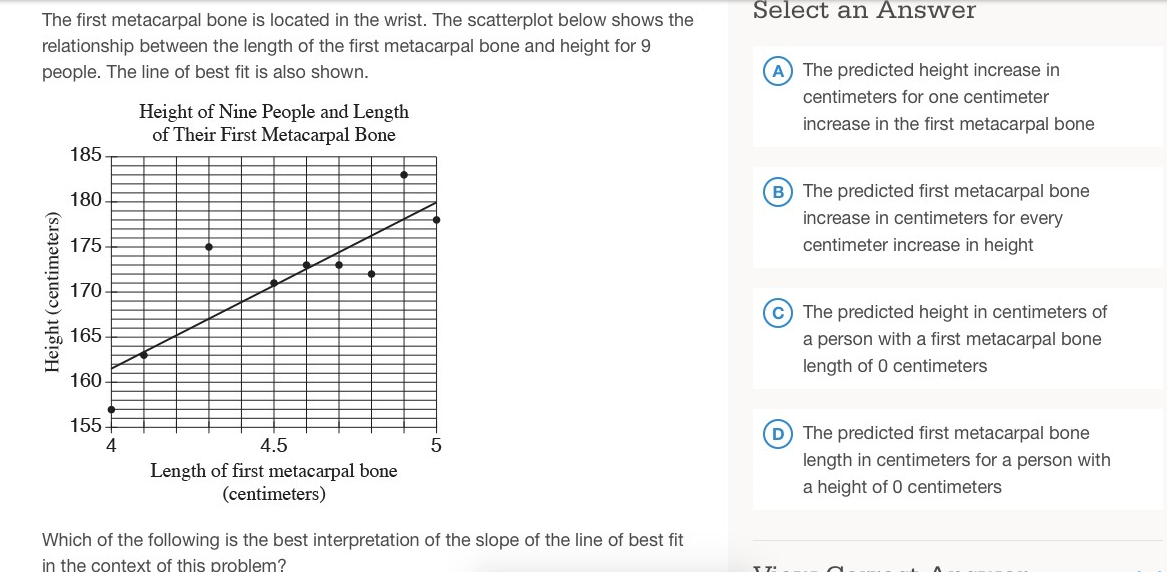
In his announcement last spring that a new version of the SAT would be launched in 2016, The College Board President David Coleman drew on a favorite buzzword: opportunity.
In his speech, Coleman finally acknowledged the common criticism that the current SAT has little to do with the work students do in high school and will do in college. He promised that the redesigned test would be more in tune with what happens in the classroom. "No longer will the SAT stand apart from the work of teachers in their classrooms," he said. The preview last week of 94 sample questions—half of which were previously released—from the redesigned test helps reveal whether the new SAT will deliver on its promise. Early indicators are not encouraging.
The new test will correspond with the Common Core Standards—the controversial math and reading benchmarks whose design and implementation Coleman happened to spearhead before taking over the College Board. That means the new SAT could have the opposite of its intended effect, at least in the near term, closing opportunities for students who aren’t yet well-versed in the standards. Kids who lack access to in-person test preparation from tutors like me—who are trained to analyze the new test material and develop strategies for raising scores—could also suffer. The most vulnerable students are those who live in low-income areas or don’t speak English as a first language.
The College Board's decision to eliminate the vocabulary component from the reading section and redesign the essay portion has garnered lots ofattention. But it’s the revision of the math section that could have particularly egregious consequences.

It’s the revision of the math section that could have particularly egregious consequences.
The new SAT will focus on fewer types of math than the current version does, sacrificing breadth for depth and testing students on the material the College Board believes to be most essential to "college and career success." That might sound like good idea. But with this change in focus comes a change in question style. And that’s problematic.The College Board's decision to eliminate the vocabulary component from the reading section and redesign the essay portion has garnered lots ofattention. But it’s the revision of the math section that could have particularly egregious consequences.
The SAT has always been what essentially amounts to an IQ exam, testing no math beyond basic high-school geometry. The new version includes fewer questions that deal simply with figures and equations, giving more space to questions like this:

This question, ranked by the College Board as "easy," is very much a product of the Common Core Standards, which ask students to both link abstractions (like the graph of a line) with real-world phenomena (such as the link between a person’s height and the length of his or her metacarpal bone) and express such connections verbally. (The answer, by the way, is A.)
It is fine—good, even—to ask students to carry out these tasks, but in many cases these are skills that students unfortunately haven’t yet mastered. If they aren’t being taught to think about graphs that way, let alone articulate their reasoning in that matter, chances are only the smartest (or well-prepared) teens will be able to arrive at the correct answer under the time and emotional pressure of the test.
Even more concerning, few math teachers are ready and able to teach students these new skills. Mark Driscoll of the nonprofit Education Development Center, which in part develops K-12 math and science programs, was recently quoted inEducation Week lamenting this shift: "Language hasn't traditionally played much of a role in the training of math teachers," he said. "In my experience, many teachers lack the guidance and tools to foster communication of mathematical reasoning [with] English-learners." The Common Core makes noble demands on teachers and students. But, at the end of the day, they are still demands, and it will take students and teachers time and effort to fulfill them.
One problem with tying the SAT to these new standards is that it will force students and schools to play a long game of catch-up. Most states will be gradually implementing the standards over the next few years—assuming it will only take that long and assuming that any student taking the exam attends a school that is successfully using standards. At last check, 42 states are in the process of implementing the Common Core standards—three of the original participants dropped out—but they are doing so at different rates.
The most vulnerable students—namely those who live in low-income areas or don’t speak English as a first language—are likely to suffer the most at the hands of the new SAT.
The other consequence of (theoretically) basing the new SAT on what students are doing in their classrooms is that it threatens to makes success on the exam even more subject to socioeconomic background. Students at struggling schools—where teachers tend to have less experience and and support and where Common Core-related textbooks can be scarce—could be at a disadvantage. After all, they haven’t had exposure to the very materials and instruction integral to performing well on the test. This could all amount to an ironic twist: For all the faults of the SAT, one of its merits, at least in theory, is that it can identify students whose formal education might be lacking but who have the mental firepower to succeed given the opportunity.
There are valid reasons, of course, for questioning the reality of that merit. But the new SAT could provide even more reasons for doubting the exam’s fairness. Students at good schools will have that much more of a leg up on this test because their teachers will be able to get them up to speed on the new SAT content. Because the current version of the test corresponds so poorly with real high school coursework, good teachers presently provide less of an advantage on the SAT than they might on the new version. Exposure to particular components of the Common Core standards will matter on the revised exam, and teachers who know the standards and know how to teach them will provide their students an advantage. Consider another "easy" question from the sample set:
相关推荐
-
短期冲刺 SAT 有哪些高效策略?
2024-08-27![短期冲刺 SAT 有哪些高效策略?]()
-
如何提升 SAT 阅读速度?
2024-08-27![如何提升 SAT 阅读速度?]()
-
还在盲目找攻略?先练完OG再去想拿高分
APP专享![还在盲目找攻略?先练完OG再去想拿高分]()
-
怎样在 SAT 复习中提高自己的时间管理能力?
2024-08-08![怎样在 SAT 复习中提高自己的时间管理能力?]()
-
怎样合理分配 SAT 各科目复习时间?
2024-08-27![怎样合理分配 SAT 各科目复习时间?]()
-
怎样选择适合自己的 SAT 复习资料?
2024-09-09![怎样选择适合自己的 SAT 复习资料?]()
-
有哪些方法可以增强 SAT 写作的论证力度?
2024-08-27![有哪些方法可以增强 SAT 写作的论证力度?]()
-
数学公式在 SAT 复习中如何牢记?
2024-08-27![数学公式在 SAT 复习中如何牢记?]()
-
SAT 数学复习重点有哪些?
2024-08-27![SAT 数学复习重点有哪些?]()
-
如何通过阅读外刊提升 SAT 阅读能力?
2024-07-15![如何通过阅读外刊提升 SAT 阅读能力?]()
-
SAT 复习中遇到瓶颈期怎么办?
2024-08-27![SAT 复习中遇到瓶颈期怎么办?]()
-
SAT 复习中如何进行自我评估?
2024-08-27![SAT 复习中如何进行自我评估?]()
-
SAT 复习中如何应对疲劳和倦怠?
2024-08-28![SAT 复习中如何应对疲劳和倦怠?]()
-
SAT考试中的图表题和信息题应该如何解答?有哪些注意事项?
2024-05-30![SAT考试中的图表题和信息题应该如何解答?有哪些注意事项?]()
-
对于写作部分的文章修改题,我应该注意哪些方面来改进文章的逻辑和连贯性?
2024-06-04![对于写作部分的文章修改题,我应该注意哪些方面来改进文章的逻辑和连贯性?]()
-
SAT考试需要准备多长时间?
2024-05-27![SAT考试需要准备多长时间?]()
-
SAT 阅读中的文学作品复习要点是什么?
2024-08-28![SAT 阅读中的文学作品复习要点是什么?]()
-
SAT 复习中如何提升语言表达的准确性?
2024-08-28![SAT 复习中如何提升语言表达的准确性?]()
-
SAT真题有哪些?
2024-05-27![SAT真题有哪些?]()
-
如何提高 SAT 阅读部分的答题速度?
2024-09-09![如何提高 SAT 阅读部分的答题速度?]()
-
SAT 复习中如何有效记忆词汇?
2024-09-09![SAT 复习中如何有效记忆词汇?]()
定制专属课程规划
领取成功
添加助教,定制你的专属课程规划

每日提分任务
专业提分资料
全程督学答疑














